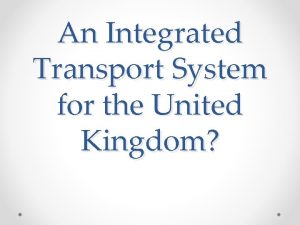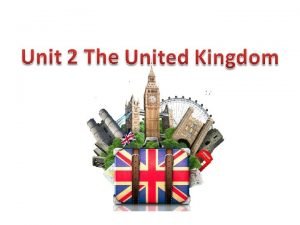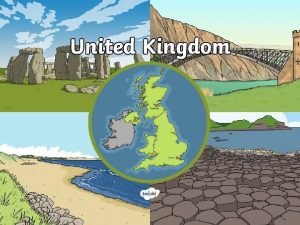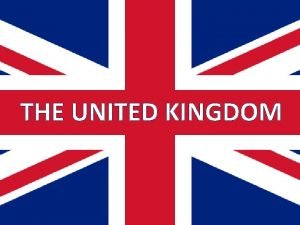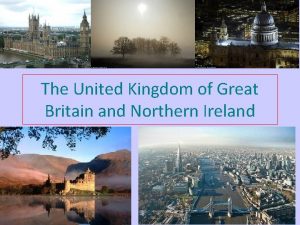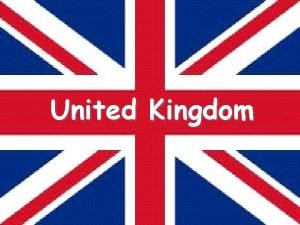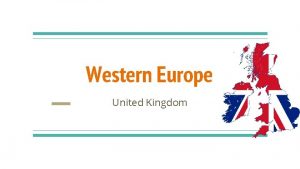An Integrated Transport System for the United Kingdom










- Slides: 10

An Integrated Transport System for the United Kingdom?

Why is there a need for this? • Good transport is critical for economic growth, social wellbeing, the environment and other factors. • Integrated Transport will allow an easier modal shift from private transport to public transport. • Following the 1980 s bus deregulation and rail privatisation in the 1990 s transport as become fragmented as the governments have failed to unify the services.

Locational Integration • Being able to easily change between transport modes • In 2009 a greater provision of bicycle storage facilities was built at train stations across the UK. • Often transport is centralised around stations; there are often taxi ranks, bus stops, and bike facilities. Also information is found here.

Timetabling Integration • Services at an interchange connect in time • For instance in San Francisco’s Bay Area, The BART metro links into local bus services at suburban interchange stations- at many of these the metro service is more frequent than the buses and so careful integration of timetables is not needed. However, at off peak times the frequency of BART trains drops to every 30 mins; at these times the buses are scheduled to depart 5 mins after the train arrives.

Ticketing Integration • Not needing to purchase a new ticket for each leg of the journey • According to centre for cities’ 2008 report, ticketing integration is the most effective short term way to improve local transport. • Difficult as different private companies run each service, e. g. Stagecoach run some Kent buses. • The Oystercard scheme in London can be used for overground, underground, buses and boats. • There is also an option for “plusbus” to be added to your train ticket, allowing unlimited bus travel in the area you are going.

Information Integration • Different independent sources are easily connected. • You can get an IPhone app called City Mapper- London Transport Live (this has the tube, the bus, cycle routes and rail in one) • Another option would be the Transport Direct website, which plans up to five different journey routes with range of different transport. • At bus stations and train stations there also leaflets illustrating different modes of transport in the area, and their timetables.

• • • Services design integration That the legal administrative and governance structures permit integration. Timetabling, Ticketing and information integration are all interdependent on each other yet in practice they have become very disjointed. This is easier in London, because of Tf. L which coordinates private operators to run bus, rail and tube services. However this is much more difficult outside of London as co-operation between private operators to provide regular, frequent services where routes coincide can be seen as uncompetitive practice. Passenger transport authorities (PTA) should be changed to Integrated Transport Authorities (ITA) who will have more power over a larger area, with more functions to allow more impact. The services are very expensive to build and run, which in turn raises ticket prices. We believe more finding is needed from the government to bring ticket prices down.

Travel generation Integration • Integrating the planning of transport with the generators of travel- particularly with land use planning. • The planning decisions of the location of travel generating land uses such as work places, shopping facilities need to take into account the location of effective interchange hubs, for example train stations. • This will build up demand, which in turn leads to service frequency and quality. • However, Britain historical nature and size means there is limited space for extensive change; unlike in the USA where cities like New York are designed in grids for easier integration.

Conclusion • Following a new deal for transport in 1998 there has been significant focus on integrated transport and evidence that it is improving; for example the Boris Bikes. • However, in the smaller urban areas and rural areas there has been a lack of investment and little or no change in the integration of services. It is therefore feasible to say the complete integration of transport throughout the UK is unrealistic for the near future.

Sources • Design for Transport; A user- centred approach to vehicle design and travel by Mike Tovey. • Centre for Cities- On the Move.
 Old kingdom middle kingdom new kingdom
Old kingdom middle kingdom new kingdom Old kingdom middle kingdom new kingdom
Old kingdom middle kingdom new kingdom Youtube
Youtube Old kingdom middle kingdom new kingdom
Old kingdom middle kingdom new kingdom What is an integrated transport system
What is an integrated transport system Full name of britain
Full name of britain Great britain and uk difference
Great britain and uk difference United kingdom
United kingdom United kingdom security vetting
United kingdom security vetting United kingdom 5 countries
United kingdom 5 countries Great britain consist of
Great britain consist of




